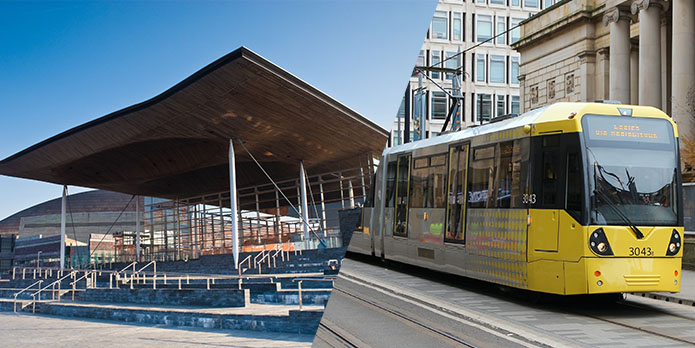
South Wales Metro needs to be tram based to achieve full potential
Dictionaries have trouble keeping up with everyday language. Not so long ago, the term 'Metro' was associated exclusively with the underground system in Paris.
These days the word is synonymous with light rail – or trams to most of us – with regions such as Greater Manchester and Tyne and Wear setting the pace.
When the Metro first emerged four years ago as a concept in Wales, courtesy of a report commissioned by the Cardiff Business Partnership, the Manchester model was very much what we had in mind.
Manchester Metrolink began in the early 1990s by converting two under-utilised and unprofitable heavy rail lines – from Bury in the north and Altrincham in the south – into a continuous tram line connected through the city centre by newly-built on-street track.
Several further lines have now been developed taking tram services to Altrincham, Ashton-under-Lyne, Bury, East Didsbury, Eccles, Salford Quays-Media City, Rochdale via Oldham and Manchester Airport.
This tram network, which already has 60 miles of track and delivers 30 million passengers journeys a year, is the backbone of a wider integrated system in which buses and heavy rail services are shaped by a single passenger transport authority.
In Wales, we have a unique opportunity to start catching up with Manchester because funding has already been earmarked for the electrification of the Valleys Lines.
But the key word is trams. A Metro in its contemporary sense needs to be a tram-centric system for two very simple reasons.
Firstly, trams can deliver a more frequent service than traditional rail because they stop and start faster than heavy rolling stock. This is especially important in our case because of the bottleneck at Queen Street station in Cardiff, which would prevent Valley Lines electrification from delivering much of an increase in frequency if it remains heavy rail. Conversion to light rail, on the other hand, could double capacity, bringing more than 24 trams an hour into Cardiff along the lines from Merthyr, Treherbert, Coryton, Aberdare and Rhymney.
Secondly, a tram system is more easily scalable than one based on heavy rail because it opens up more feeder route options and they cost less to construct. Connecting Blackwood, for example, would be too expensive with heavy rail but becomes feasible in a tram-based system. Building a tram line to Cardiff Gate Business Park would not be justified as a standalone option, but becomes realistic as a spur from the line to Rhymney if it’s converted to light rail.
The Welsh Government is right to focus on the immediate task of electrifying the Valley Lines. It’s the best way to get the Metro project moving and is much lower risk than going for new-build straight away, as cities such as Edinburgh have done.
But we should start as we mean to go on. If we take the opportunity to convert Valley Lines to light rail at the same time as it is electrified, we will open up a world of possibilities for faster, more frequent services and more connecting feeder lines.
That subsequent expansion of tram-based Valleys Lines into a wider Metro network will, however, require further rounds of funding and a governance structure capable of delivering integrated passenger transport for the whole capital city region.
On both counts, last week’s announcement that south east Wales’s local authorities and the Welsh Government have joined forces to bid for City Deal funding was a big step forward.
They have set aside parochialism to share the £500,000 cost of developing a proposal for the UK Government to invest in infrastructure in the region, including the Metro.
There are still many challenges ahead, not least overcoming the legacy of 1980s bus deregulation in order to eliminate the nonsense of not co-ordinating different modes of passenger transport.
But the Metro is moving from vision to reality. Work on electrification of the Valleys Lines is expected to start in 2017-18. Procurement could begin next year.
So we should be clear at the outset what we mean by a Metro. It needs to be tram-centred because that is the way to deliver the kind of connectivity that will open the valleys to investment and bring skills into the capital. It’s not a question of semantics.
